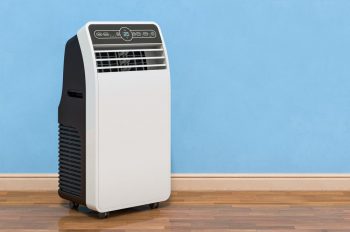
Ceiling fans are a common feature in many homes and commercial spaces, offering an energy-efficient alternative to air conditioning. A key component of every ceiling fan is the motor, which powers the fan blades and determines the fan’s performance and longevity. The question that arises often is: How long do ceiling fan motors last?
The average lifespan of a ceiling fan motor is approximately 10 to 15 years. This can vary based on factors such as the build quality of the fan, the frequency of its use, and how well it is maintained. High-quality ceiling fans that are well maintained and used less frequently can last up to 20 years or more.
Average Lifespan of Ceiling Fan Motors
The average lifespan of a ceiling fan motor is around 10 to 15 years, depending on factors such as build quality, usage frequency, and maintenance. High-quality ceiling fans with proper maintenance and minimal usage can last for 20 years or even longer, while low-quality fans with frequent usage and poor maintenance may break down after just a few years. The number of hours the fan runs throughout the day and the speed at which it operates also influence its lifespan.
Factors Influencing the Lifespan of Ceiling Fan Motors
Several factors can shorten or prolong the lifespan of a ceiling fan motor:
- Build quality: High-quality ceiling fans typically have better motors, which can last longer and provide more efficient performance.
- Usage frequency: Fans that are used more frequently tend to wear out faster than those used less frequently.
- Maintenance: Regular cleaning, lubrication, and addressing any issues promptly can extend the lifespan of a ceiling fan.
- Environmental factors: Ceiling fans located in areas with high humidity, extreme temperatures, or exposure to dust and debris may experience accelerated wear.
- Bearing type and condition: The type of bearing used in the motor and its condition can significantly impact the fan’s lifespan.
- Operating ambient temperature: A cooling environment can prolong the lifespan of a cooling fan, while a poor service environment may reduce its service life.
- Fan blade balance: Properly balanced fan blades can help extend the life of the motor.
- Motor efficiency: Energy-efficient motors tend to have a longer lifespan due to reduced strain on the motor components.
Maintenance and Lifespan
Maintenance plays a crucial role in the longevity of a ceiling fan motor. Regular cleaning, lubrication, and addressing any issues promptly are key to maximizing its lifespan. Lack of maintenance can lead to several problems, including dust accumulation, overheating, and bearing degradation, which can all shorten the motor’s lifespan.
Keeping the fan blades clean and balanced, securing all screws and connections, and ensuring the fan is installed in a suitable environment are all part of regular maintenance. Cleaning the fan blades and motor housing at least once a year, and lubricating the motor as per the manufacturer’s guidelines, will help keep your ceiling fan running smoothly and efficiently.
Recognizing a Failing Ceiling Fan Motor
Knowing the signs of a failing ceiling fan motor can help you address the issue before it causes further damage. Common signs include squeaky bearing noise, slowing of fan speed, humming or buzzing noise, jerky movements, unusual noises, and fan blades not spinning despite the motor running.
Choosing a Long-Lasting Ceiling Fan Motor
When choosing a ceiling fan, consider factors such as the type of motor, Energy Star certification, sealed bearings, and heavy-duty motors for a longer-lasting ceiling fan. Brands known for their long-lasting motors include Hunter, Emerson, Casablanca, Minka Aire, and Fanimation.
Conclusion
In conclusion, with proper care and maintenance, a high-quality ceiling fan motor can last anywhere from 10 to 20 years or even longer. Regular maintenance, including cleaning and lubrication, can help prolong the lifespan of a ceiling fan motor. Recognizing the signs of a failing motor and addressing them promptly can also help maintain the motor’s performance and longevity.
Frequently Asked Questions
How often should I lubricate my ceiling fan motor?
Lubrication frequency depends on the manufacturer’s guidelines. However, as a general rule of thumb, lubricating your ceiling fan motor once a year should suffice.
What type of lubricant should I use for my ceiling fan motor?
You should use a non-detergent based light machine oil or a product specifically designed for ceiling fans. Avoid using cooking oil or automotive oil as they can damage the fan’s motor.
Is it possible to replace a ceiling fan motor if it fails?
Yes, it’s possible to replace a ceiling fan motor. However, it might be more cost-effective to replace the entire fan, especially if it’s an older model.
Can a ceiling fan motor be repaired?
Some issues with ceiling fan motors can be repaired, such as problems with bearings or the fan’s wiring. However, if the motor’s windings are damaged, it’s usually more practical to replace the motor or the entire fan.
How do I know if my ceiling fan is Energy Star certified?
Energy Star certified ceiling fans will have the Energy Star logo on the packaging and the product itself. You can also check the manufacturer’s website or the Energy Star website for a list of certified products.
What does an Energy Star certification mean for a ceiling fan?
An Energy Star certification means the ceiling fan meets strict energy efficiency guidelines set by the US Environmental Protection Agency. Energy Star certified fans use less energy, save money on utility bills, and help protect the environment by reducing greenhouse gas emissions.












